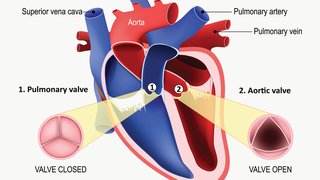
A diagnosis of advanced heart failure can sound ominous, even terrifying. But it is not the death sentence the condition’s name may seem to indicate.
In fact, thanks to innovations in research, technology and available therapies, there is now hope even for patients with advanced heart failure.
The key to managing the chronic cardiac condition, which occurs when the heart is too weak or stiff to effectively pump blood, is detecting it early enough so a broad range of therapies are still available to the patient.
I’m on a mission, of sorts, to help cardiologists, internists, family practitioners, other health care providers, and their patients recognize the clues of advanced heart failure and ensure that patients get the specialized treatment they need.
At UT Southwestern, nine of our physicians have been board certified in advanced heart failure and transplant cardiology. Our large multidisciplinary team has the expertise necessary to treat even the most complex and challenging cardiac conditions.
Heart failure 101: Four stages
Heart failure is a common condition that affects more than 6 million people, about 10% of whom are facing advanced heart failure, which has also been called end-stage heart failure, refractory heart failure, and stage D heart failure.
Those patients remain an underserved population. One reason is there really isn’t a standard definition of advanced heart failure.
The American College of Cardiology and the American Heart Association updated their guidelines in 2017, defining the stages of heart failure from A to D:
- Stage A is for patients at risk for heart failure but with no structural heart damage (for example, people with diabetes or high blood pressure)
- Stage B describes patients with structural heart disease (i.e. reduced ejection fraction, left ventricular hypertrophy, chamber enlargement) but no symptoms of heart failure
- Stage C is the designation for patients who have developed clinical heart failure.
- Stage D is considered patients with refractory heart failure requiring advanced, specialized interventions (i.e. mechanical devices for circulatory support, or transplantation)
6 clinical clues to discovering advanced heart failure
At UT Southwestern, we have a particular set of clinical clues we use to identify a patient who should be referred for advanced heart failure treatment. These clues can be easily recognized by all health care providers. They also can be recognized by patients, which would allow them to begin discussing the prospect of specialized care for advanced heart failure with their provider.
- Persistence of significant symptoms, such as shortness of breath or fatigue while dressing, showering, or walking less than one block.
- Recurrent hospital admission or ER visits for heart failure; at least two in 12 months: If you end up in the hospital on multiple occasions, your mortality rate goes up considerably. After two admissions in one year, a patient should be referred for evaluation for advanced therapies.
- Systolic blood pressure (top number) < 100 mm Hg: As your heart gets progressively weaker, your blood pressure starts to decline from your baseline blood pressure.
- Erratic renal or kidney function (rising creatine and BUN): I always say, “the kidneys don’t lie.” When creatine and BUN rise, it can be an indication the heart is not pumping properly or that blood may be backing up in the kidneys.
- Unable to tolerate medications: Beta blockers and ACE inhibitors are medications that can save lives in patients with heart failure. However, as heart failure gets more advanced, patients may not tolerate them as well and it can also be a signal that you have progressed into advanced heart failure. For instance, if you are taking beta blockers and you experience progressive shortness of breath or swelling, the medication may have to be decreased or stopped. And if your body does not tolerate ACE inhibitors due to low blood pressure or worsening renal failure, you should consider seeing an advanced heart failure specialist.
- Unintentional weight loss: Patients with heart failure may unintentionally lose body weight; for example, 5% to 10%, or more. That can be a signal you have advanced heart failure.
A patient with a combination of these clues likely has advanced heart failure. Even one of these may signal the development of advanced heart failure (e.g., recurrent heart failure hospitalizations). Cardiologists and other health care providers should be on the lookout for these clues, which are relatively easy to recognize. Patients and loved ones should also be aware of them so they can discuss being referred to an advanced heart failure specialist before it’s too late.
Treatment options for advanced heart failure
Once the clues of advanced heart failure are discovered, and the patient is referred to UT Southwestern, what kind of treatment therapies can they expect?
Heart transplant: We just passed the 51st anniversary of the first successful heart transplant, and it’s amazing how far the revolutionary surgery has come. Every day in operating rooms around the country, including at UT Southwestern, someone is saved by a donor heart.
It's incredible, but there are inevitable problems. The timing is unpredictable. The supply of donor hearts is limited – there are only about 3,000 available, but about 40,000 people have advanced heart failure.
And transplant comes with its own set of baggage, including the possibility of infection and cancer risks, among others.
A heart transplant is a heroic and beautiful treatment that can extend the right patient’s life for a decade or more. But transplant is not the answer for everyone.
LVAD (left ventricular assist device): Because we just don’t have enough hearts, and some patients can’t wait until a heart becomes available, left ventricular assist devices, or LVADs, have emerged as a game-changer.
The mechanical pump is implanted during an open surgical procedure and it helps the left ventricle pump oxygen-rich blood to the aorta and the body. Initially, LVADs were seen as a bridge to a transplant, but now these partial artificial hearts have become an alternative therapy for non-transplant candidates.
In the past, we had very little to offer a patient who is 75 or older, has had two bypass surgeries, and progressive heart failure. They were too old for transplant, but now we have a therapy available. In fact, as LVAD technology continues to get smaller, more durable, more reliable, and easier to implant, it creates the potential for a longer, healthier life for an ever-expanding group of patients.
UT Southwestern has pioneered the development, research and use of LVAD therapy, and we were among the first U.S. centers approved for LVAD destination therapy for long-term cardiac support. Our multidisciplinary team includes surgeons, advanced heart failure cardiologists, nurses, advanced practice providers, social workers and dietitians.
There are some patients with advanced heart failure who are not candidates for LVAD or heart transplant. In such cases, we involve our Palliative Care Team to help manage their symptoms, improve their quality of life, and align goals of care with the patient’s preferences.
Together, the team at UT Southwestern works to provide the most innovative and compassionate care for our patients with advanced heart failure. If you want more information about advanced heart failure treatments, you can call 214-645-5505 or request an appointment online.











